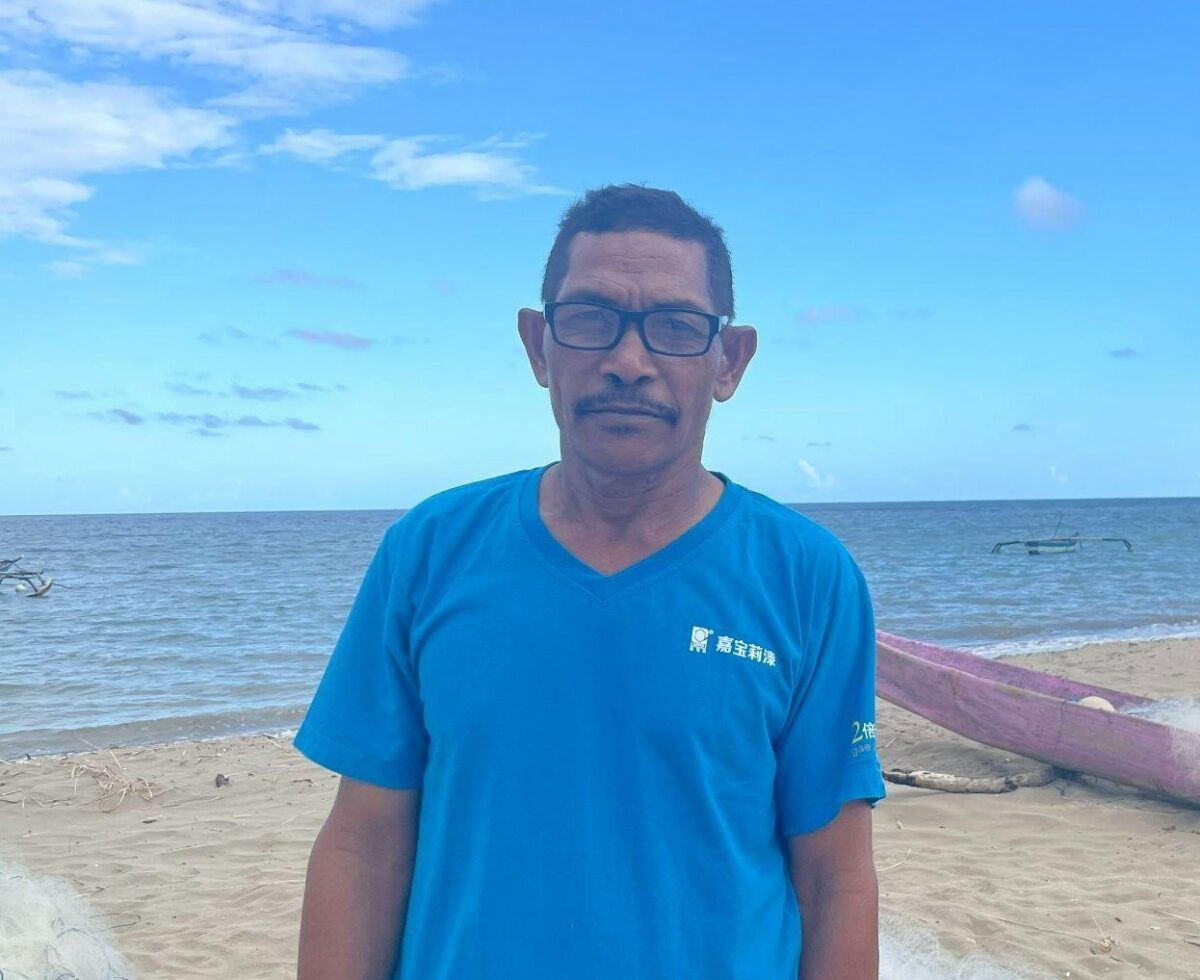In Timor-Leste, the coastal waters of Viqueque – known locally as Viqueque Municipio – are rich in fish species such as tuna, mackerel and snapper. The region is also home to a lively coastal community and a thriving group of fisherfolk. With support from the Arafura and Timor Seas Ecosystem Action Phase II (ATSEA-2) Project, they are developing more sustainable practices and securing the long-term future of their communities.
In recent years, efforts from the Ministry of Agriculture and Fisheries (MAF) of Timor-Leste, through the ATSEA-2 Project, in collaboration with UNDP Timor-Leste, have been made to support the fisherfolk in Viqueque. The ATSEA-2 Project has been focusing on improving community infrastructure, providing training in sustainable fishing practices and improved management of coastal resources. The goal is to empower fisherfolk, encourage responsible fishing methods and ensure a sustainable future for their livelihoods.
Gaining Crucial Knowledge: ATSEA-2 Visit to Viqueque

Fatudere Suco, Viqueque Municipio, Timor-Leste
In March 2023, the ATSEA-2 Project Team visited Viqueque to witness the impact of program initiatives (the team had previously conducted training sessions on Ecosystem Approaches to Fisheries Management (EAFM) between October and November 2022). During their visit, the team engaged with members of the fisherfolk community centred around Fatudere Village. Here, in the sub-village of Adarai, they met Tomas Alberto Da Silva.
“Through the ATSEA-2 Project, we have gained crucial knowledge on cultivating marine resources and the importance of preserving our marine ecosystem,” said Tomas. “This training has empowered us to adopt sustainable practices and protect our valuable marine resources, including coral reefs and mangroves.”
Creating Opportunities for Fisherfolk

(a type of floating buoy used to attract oceanic fish)
The fisherfolk group in Adarai has grown from 30 members in 2002 to 69 members by 2019. However, malfunctioning fish aggregating devices, known as rumpons, subsequently led to a decline in membership. Despite setbacks, the group remains resilient, with 12 smaller groups comprising around five members each, totaling 69 fisherfolk. For many of the fisherfolk in Adarai, access to essential equipment and infrastructure remains a critical challenge.
Dr Handoko Adi Susanto, the ATSEA-2 Regional Project Manager, insists that material support alone is not enough. “This problem is not unique to Adarai,” he explains. “Fisherfolk face similar problems across the ATS region; many obtain the tools they need from the government, but are not equipped with knowledge to optimise the use of these facilities.”
And that’s where the ATSEA-2 Project can really make a difference. Through capacity building, training and the diversification of livelihoods, fisherfolk have been empowered to overcome challenges and build their resilience by embracing a multifaceted approach. In addition to fishing, they engage in gardening and livestock rearing, particularly during unfavourable weather conditions. Notably, women actively participate in fishing activities and have formed cooperatives and savings groups since 2019, thereby challenging established gender roles, promoting equality and contributing to a more inclusive fishing industry.
“The participation of women in fishing activities has been instrumental in establishing cooperatives and savings groups,” explains Tomas. “Their involvement empowers them economically and fosters solidarity within our fishing community; initiatives providing training on sustainable fishing practices and financial management, specifically for women fishers, have been vital in promoting gender equality and creating a more inclusive sector.”
The Path to Progress
Fisherfolk in Adarai have made significant strides. They have overcome limitations in refrigeration and transportation, enabling them to sell their catch outside the village; support from individuals in Viqueque who purchase their catch in bulk and then sell it in the city has been instrumental in expanding their market reach. These fisherfolk continue to preserve their marine resources and contribute to the sustainable development of their community.
“The ATSEA-2 Project has played a vital role in our progress,” says Tomas. “With ATSEA-2’s support, we have gained knowledge, improved our practices and diversified our sources of income. We are grateful for the collaborative efforts between our community and the government to address our challenges, such as equipment maintenance and procurement.”
The success of fishing communities in Adarai, Viqueque, is a testament to the resilience of local people and their commitment to building sustainable livelihoods for themselves. By empowering fisherfolk and promoting sustainable fishing practices, the ATSEA-2 Project is helping to drive positive change in Viqueque, ensuring a brighter future for coastal communities.
Moving forward, the ATSEA-2 Project will collate the lessons learned from the recent visit and convey the messages collected among the fishing communities of Adarai to the government, in order to inform planning that accommodates their needs. By building bridges between fisherfolk, communities and the government, ATSEA-2 is helping to create a synergetic, thriving environment that supports livelihoods and preserves marine resources for generations to come.
By Stella Yovita Arya Puteri


